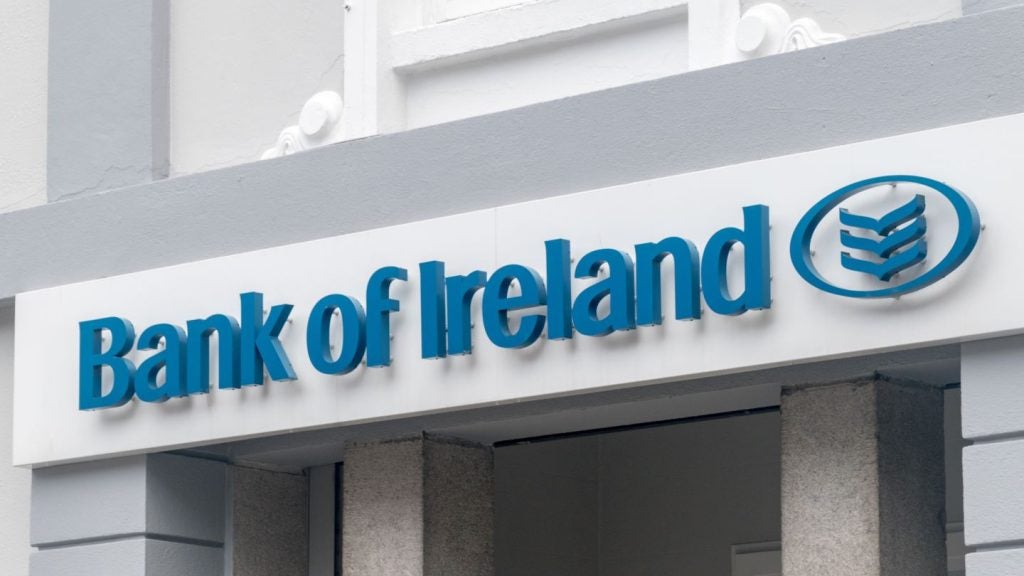
Arrangements between lessors and vendors to provide point-of-sale finance for products are nothing new, but as customer needs change, lessors must balance revenue priorities with customer demands, and the preferences of vendor partners. Saad Ahmed speaks to key lessors on how the sector is evolving.
Vendor financing, for me, means engaging with a manufacturer, dealer, or supplier, to support them with a point-of-sale finance offering, to increase their sales and give them greater socket control over their customers,” Steve Bowden, sales director at Société Générale Equipment Finance (SGEF), tells Leasing Life.
Vendor financing is a key part of the leasing and asset finance market. In providing a point-of-sale finance offering, lessors allow manufacturers and dealers to work together to increase sales, and, by extension, spread services to businesses which seek them. The relationship between lessor and vendor-dealer partner is, therefore, a delicate balance.
“To best maintain a vendor financing relationship, a well-understood escalation procedure is needed, together with an ongoing performance and strategy review,” says Daniel Proctor, commercial director of Henry Howard Vendor Finance.
When engaged in vendor financing, lessors must balance their needs for revenue with the demands and expectations of the vendor-dealer, all the while keeping pace with the changing requirements of end customers. Leasing Life speaks to a number of lessors about the features of vendor finance, and how they manage the relationship with their partners.
The relationship between a vendor and a lessor must be managed carefully to ensure that both parties benefit from the agreement. There is emphasis on the need for lessors to understand their vendor partners, and to ensure that they are kept informed.
“First of all, [it is important to] understand the vendor’s business and their customer base so that the right finance solution is offered,” Peter Hupfeld, co-head of transaction banking and chief executive officer of Nordea Finance tells Leasing Life.
Hupfeld says the first key thing for a lessor to consider when entering a vendor finance contract is the position of the business. He says that lessors must be aware of their vendor’s practices and product offering in order to be able to craft an appropriate finance package.
How well do you really know your competitors?
Access the most comprehensive Company Profiles on the market, powered by GlobalData. Save hours of research. Gain competitive edge.

Thank you!
Your download email will arrive shortly
Not ready to buy yet? Download a free sample
We are confident about the unique quality of our Company Profiles. However, we want you to make the most beneficial decision for your business, so we offer a free sample that you can download by submitting the below form
By GlobalDataProctor says vendors must ensure that processes are well defined, “preferably through the use of automation; [it] is vital to the success of vendor financing.”
He adds that vendors must be kept informed and have sufficient information, and says this must involve a training scheme, and support in the field from their lessor partners. “Coupling these facets with a well-implemented training scheme for the vendor and ever-present field support will ensure the highest chances of success,” he says.
The lessors indicate that this was a continual process, and that both lessors and vendors must keep themselves informed by keeping open lines of communication, to ensure a successful relationship.
Standing out
When seeking a new vendor financing deal, lessors are in sharp competition. For this feature, many of the five equipment lessors that Leasing Life speaks to operate in the same countries and markets.
It is important for lessors to stand out, and show the vendor what they can offer in addition to the expected. Bowden tells Leasing Life that for SGEF, its continental reach is something it hopes appeals to vendors.
“Our unique selling point is our European network. If we’re pitching to somebody who is international, that would be the first thing we would offer. We’ve also got to be able to deliver locally,” he says. Bowden adds that SGEF’s speed of service was an aspect that it tried to promote to induce more vendor financing relationships, saying it delivers a smooth process.
“By supporting them [the vendor] with good service levels, and along with our online systems to propose their transactions, this enables us to provide quick credit approvals and to generate customer documentation. SGEF’s expertise in finance enables the implementation of a smooth process for our vendor partners,” he adds.
Dario Ghislandi, head of equipment and logistics solutions international business line at BNP Paribas Leasing Solutions, says its integrated product offering is a way in which it looks to differentiate its offering.
“Here are what make a difference: a large offer of products, the capacity to offer global one-stop shopping solutions, and integrated product offers,” he says, adding that speed and simplicity were also important.
Ghislandi believes “vendor financing is a people business,” and having sales staff on the ground is important for a vendor financing relationship. He adds that BNP Paribas Leasing Solutions keeps its staff trained and updated to help it better manage the vendor financing relationship. “They must also have a good understanding of the business segments they operate in, the market trends, and the financed assets,” Ghislandi says.
White-label agreements allow vendors to present an equipment finance sales offering under their own branding, rather than that of the lessor.
Hupfeld tells Leasing Life that for some vendors, this may be crucial to their brand strategy. “Vendor financing can be an important part of the vendor’s branding policy,” he says. “Nordea Finance provides vendors a possibility to have the finance quote, agreement and invoice under the vendor’s own branding.”
Ghislandi believes there is no reason for a lessor’s brand to be shown. He says that for vendors, choosing a white-label vendor finance solution is an important statement to customers. “A white label is a message from a vendor to its customers, ‘We take care of you, not only by producing performing equipment but also by making them available for you,’” he explains.
He states that this can reassure customers that the finance offering matches the quality of the equipment. “What better [way]…than to offer them financing through their own brand?”
Naturally, vendor-branded finance confers a loss of visibility for the original lessor, as the end users are not aware of their involvement. Hupfeld adds that if a vendor does not think its own branding was necessary, then Nordea can still offer the vendor financing, but under its own name. This would also have the effect of increasing awareness of the Nordea brand.
“If the vendor’s own branding is not seen as necessary, or if the vendor actually values the Nordea branding to support their market image, Nordea Finance does offer a white-label solution with Nordea Finance branding,” he adds. “Naturally this makes Nordea Finance more visible to end customers through regular invoices, thus strengthening the brand awareness of Nordea Finance.”
Proctor says it is important for lessors to remember that through white-label finance, their offering is representing the vendor. “Supporting vendors typically means investing in their brand,” he says. “As a white-label product, you carry the reputation of your client and have to treat this with respect.”
As the trend of usership continues to develop, lessors must determine how to alter how they offer functions in order to keep pace with changing customer preferences and expectations. At the Leasing Life conference in November last year, lessees wondered what industry they were in. Questions hovered over whether or not they were lessors which financed and delivered the items, or service providers in which other services were provided as add-ons.
How lessors can respond to this in a way which satisfies all parties involved seems to be a matter that is not yet resolved.
Despite the continuing questions, some of the lessors speaking to Leasing Life reveal that they have begun to explore strategies to meet these demands. Proctor says that for leasing to be used effectively, it must be presented at the point of sale.
“It is critically entwined to the sale at the vendor,” he says. “Adopting a monthly cost to the customer and presenting this as a leasing option will increase the close rate and reduce the sales cycle.”
Ghislandi says leasing as a service is an important part of BNP Paribas Leasing Solutions’ vendor financing offering. “Leasing as a service is a key element,” he says. “Training materials that are ready to be used and customisable, self-care and do-it-yourself tools, these elements improve the level of service at the point of sale, while strengthening efficiency for the lessor.”
Including an offering with services at the point of sale can increase the chances of closing on a vendor financing deal, Hupfeld explains. “The possibility to provide a full solution with finance combined with the sale of the asset gives the vendor a stronger position to close the deal,” he says, adding that this may provide the edge of competing vendors.
“There are variations in how the vendors integrate financing in their offering, and also include interest subsidies in connection to the leasing,” he adds.
Asset management
Lessors can provide asset management to their vendor partners, and take care of products on the returns cycle when they are no longer in use. Hupfeld says the development of a remarketing policy is important in vendor financing, as it helps to protect the price picture of the assets, and strengthens the vendor’s role in the used equipment market.
“A common approach on the used equipment marketing provides a solid base for residual value setting, allowing solutions that are competitive, but also safe for both vendor and lessor,” he says.
Similarly, Proctor says products based on residual values allow vendors to set the best prices month by month, and are key to recovering any remaining value.
“Asset management and remarketing therefore become critical as a genuine route to recouping investment,” he says.
Bowden tells Leasing Life that SGEF’s dedicated asset management team allows it to take open residual positions in assets. He says that its competitors back the residual risk to a third party, a situation which may cause complications as other firms may seek to cash in.
“If you use a third party in vendor finance they will be looking to make profit at the back end, which can bring them into conflict with the vendor partner. We will work with the vendor at expiry to extend the deal or arrange a new transaction,” he says. “In-house asset management capabilities enable you to manage the back end better, and avoid conflict with the manufacturer partner.”
Ghislandi notes that as the pay-per-use trend develops, asset management and remarketing play a greater role. However, he adds that BNP Paribas Leasing Solutions does not seek to control the remarketing process alone. “Remarketing might be a source of profit, but selling new or second-hand equipment is the core business of the partner and the lessor cannot become a competitor,” he says. “For this reason, the remarketing strategy, as well as the economic results, must be shared with partners.”
A major benefit of vendor financing, according to the lessors, is its impact on the vendor’s portfolio management. They suggest that vendor financing provides some reliability or income stability for the vendor, as it enhances the possibility of retention sales when the lease agreement ends.
“Vendor financing has a role in the vendor’s inventory management as well as in taking advantage of the instalment base,” Hupfeld says. “[It] allows the vendor the possibility for retention sales.” He adds that this adds security, as new agreements are drawn up before the contract ends, allowing vendors to avoid competing against rivals for existing customers.
Proctor says portfolio management is included in Henry Howard Vendor Finance’s programme, and is a key selling point. He adds that the business provides technology which shows the status of the lease.
“This then allows an effective upsell or upgrade programme to maximise average revenue for users over the term of the contract,” Proctor adds.







